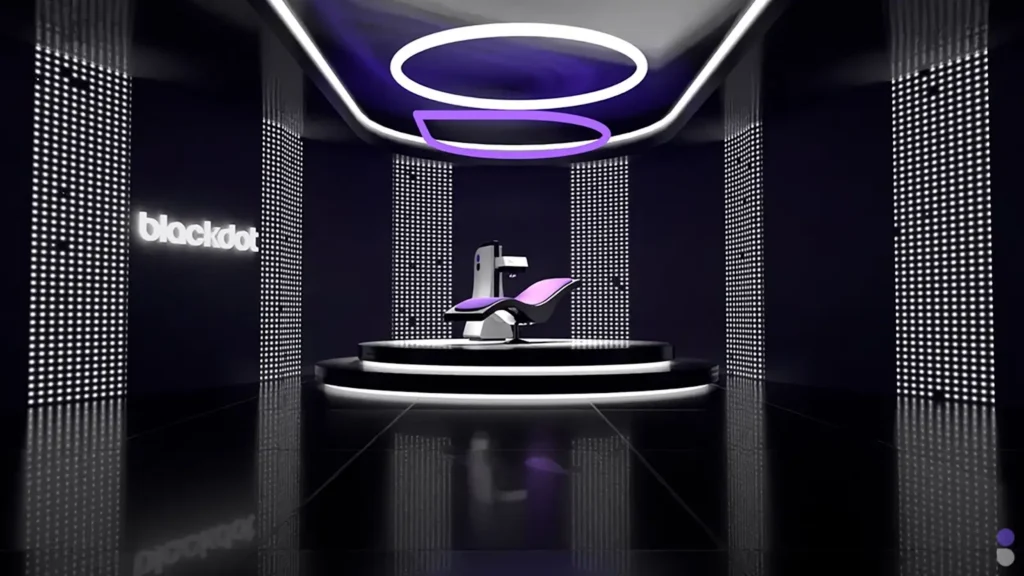What is a black dot tattoo?
Austin-based BlackDot Studio has created an “automatic tattoo system” that uses the machine to accurately apply tattoo designs. Blackdot claims that this means that tattoos can be applied accurately, which means that tattoos reduce pain and provide more artists with the opportunity to apply art to their skin.
This new way is to stir up a conversation about the future of tattoos. Will it replace the traditional approach or simply offer options to clients looking for new experiences?
Extremely accurate
BlackDot devices are intended to apply small “black dots” using surgical accuracy, as well as digital printing processes (human skin only). Each deposit of ink is the width of human hair. It’s very small compared to the smallest needles available to traditional tattoo artists.
One reason artists don’t work with such small needles is that if the tattoo needle is too thin it’s very easy to go deep into the skin.
However, Blackdot argues that their machines can respond to client skin characteristics to ensure that ink accumulates at the right depth, minimizing the risk of human error.
Black Dot’s vision for tattoo artists
In contrast to replacing tattoo artists, the goal of Black Dot is to give artists (whether they have experience with tattoos or not) a simple way to apply them to their skin.
For artists like traditional artist John Craig, you can use a black dot device to replicate the art on your skin without learning how to apply a tattoo. For tattoo seekers who want to bring their artists’ work into new mediums, this is a potential route.
Blackdot also mentioned that the use of “generated art” is a way to expand the product, as a way to collaborate with artists who use algorithms and coding to create complex designs.
Any artist can work from the tattoo location of the client’s preference

One of the advantages of such “machine tattoos” is that tattoo artists can still provide tattoos even when their clients are in the middle of the world.
Additionally, BlackDot offers artists the opportunity to create limited edition collections, earn royalties and become “BlackDot Certified Artists” who can sell designs all over the world. The current partnership includes artists such as Tyler Hobbs and Omertanka.
Black Dot’s “Travable Tattoos”
Black Dot’s “Travable Tattoo” program is intended to allow artists to exchange designs with other artists. It is also a way for people seeking tattoos to assert their designs from artists they like. This process is not entirely detailed on the BlackDot website, but the system appears to be similar to NFT trading.
Missing pieces in the BlackDot system
New technology is constantly being adopted by the tattoo industry. Inventing rotary machines, using iPads, introducing AI – all new advances face widespread criticism from artists within the industry. And in overtime, all groundbreaking innovations have found their place in the industry as artists use technology as a way to increase and improve creative output.
However, Blackdot received some backlash from the tattoo community, citing the real issue.


Currently, customers who tattoo customers who choose BlackDot can mostly expect to pay thousands of dollars for “micro-tat.” This is unrealistic for most clients, especially those who live far from Blackdot’s East Austin Studio location.
Note:
Blackdot plans to open more places. They are currently looking for future investors to support their expansion efforts.
Fine Art Micro Tattoo Lifespan


BlackDot uses an innovative approach, but the first tattoos are very detailed and showcased small tattoos that were released on their website and Instagram.
Many artists and clients have criticised Blackdot’s famous Mona Lisa Tattoo, one of the most popular small designs. Small, detailed designs tend to “blurred” over time as the skin changes and the body breaks down the ink.
Essentially, clients with that tattoo, or other clients with the same level of detail in such a small space, will develop a greyish chunk in their arms as time goes on.
Impact on the tattoo industry


Blackdot insists on partnering with artists and constantly promotes their commitment to lowering artists’ barriers. With an automated system of tattooing for them, artists from various media can help people who love their work get tattoos.
Furthermore, accurate and consistent results from a well-tuned machine can potentially reduce the risk of getting a “bad” tattoo and dealing with blow-offs and more.
However, this futuristic way of getting a tattoo has been highly criticized by both artists and clients, and sees tattoos as crafts that rely on practical skills. If machine tattoos become popular, they can break into employment opportunities within the industry as they allow not only tattoo artists but artists to “tattoo” someone.
Final Thoughts – Futuristic Vision of Traditional Tattoos and Black Dots
The process still needs to be refined, but machine-made tattoos could be in the future of the tattoo industry. Several attempts have been made so far, with each iteration being dramatically improved.
However, we have been away from robot tattoos being a viable option for the average tattoo client. Currently, black dot tattoos are too expensive to draw large customers, and many of the online conversations surrounding the company focus on costs.
That said, the general vibe of the tattoo industry remains the same. Most clients prefer the process of working with human tattoo artists. This is an emotion that appears to be nowhere soon, protecting the long-standing tradition of tattoo artist work and artist-client relationships.
